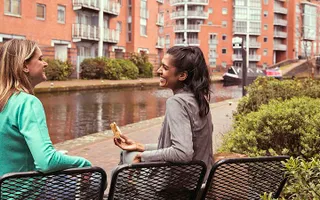One of the nation’s oldest fishing clubs recently delved into the archives as part of their 150th anniversary celebrations. The club are also taking the right steps to make sure they'll be around in another 150 years, which is where we kick off…
The fishing, it's too expensive
The article called for members at the princely subscription fee of £1 (20 shillings) per annum. That's the equivalent of £112 per year at today's prices.
Six months earlier there was a letter to the said newspaper complaining of the cost of the annual fee, on the grounds that it would exclude large swathes of the working class. When you consider the average wage in 1868 of an agricultural labourer was just 12 shillings a week, you can perhaps sympathise with the indignation of the writer.
Turn of the century
Moving onto Saturday, 18 August, 1900 and by now the club is known as the Wellingborough Nene Angling Club, a match was held on the river between the Midland Railway Viaduct (14 arches) and Ditchford where and 33 fished. Mr W Goodman acted as weigher and referee. The presence of referees was a feature of matches back then, including in the oldest known official fishing match on the Weaver back in 1846.
Training it to your peg
The arrangements were made by Mr. Thomas Pendered (Secretary) whose family still have a close association with the club. One would assume that Mr Jones of Northampton caught the train from Northampton Bridge Street Station travelling on the LNWR line and alighted at Ditchford Holt.
Profitable year
A club AGM was held on Friday 12 January 1912 at The Hind Hotel in Wellingborough with Mr. J. Pendered (President) and Mr. R W Marriot (Honorary Secretary) presenting the accounts. They showed that the last year's accounts balance of £4-13s-6d had been converted to a balance in hand of £8-2s-6d. Mr. Marriot was heartily thanked for his services. Election of officers, President Mr. J Pendered, Vice Presidents H Hilton, Henry Archer, T Brown and Herbert Dulley. It is interesting to note that 107 years later we still have a member of the Pendered family as President of this Club – Martin Pendered.
Illegal fishing is nothing new
Comment was made at the AGM about the amount of illegal fishing during the daytime and it was decided to appoint an additional keeper for the daytime period and also to seek prosecution in all cases of illegal fishing. The annual competition dates and dinner were arranged for 12 September. Back then, the social side of fishing clubs was considered very important.
Word War looming
The most poignant match report found was from the Evening Telegraph dated 20 August 1939, two weeks to the day before the outbreak of the Second World War. This was fished at Harrold on the Great Ouse and was won by H Clay Smith 5lb 9oz, second place went to A MacDonald 2lbs, third place to Tom Sharpe 1lb3ozs with fourth spot going to W Miles with a level 1lb. I'm sure for a few of the lads taking part that day, fishing was not the only thing on their minds as everyone knew by then the outbreak of a global war was all but inevitable.
Post war period
After the cessation of the hostilities, the club went from strength to strength and on 10 March, 1957, the last match of the season, ‘Haydns Wee Two Cup' was fished for at Ely on the Ouse, winners F Cutler and F Goodwin 32lb 1oz.
Individual results were: F Cutler 19-13-7, N Spring 15-0-0, B Fairey 12-12-8 and F Goodwin 12 3-10.
Also in that year the ‘Fur & Feather' was fished for at Ditchford. First place F Alderman 4-2-0, 2nd place was a dead heat between F Perkins and M Dent 3-0-0 and forth place to A Stroud 2-14-8. Gale force winds seriously curtailed the weights of the December 10th match (no change there).
Ringstead Island
Moving a lever on the old time machine we come to 1993 and the acquisition of the deservedly named Brian Crowhurst Ringstead Island Fishery. Special mention must be made of Brian, for in the 150 year existence of the Club, Brian served as Chairman for 48 years and a total of 60 years as a committee member. Other stalwarts are George and Tony Barker (eel expert) whose hard work, support and generosity is widely recognised. We're sure that the 1869 founding fathers could never have envisaged the development, growth and success of the club, I think they would be very proud of what's been achieved thus far.








